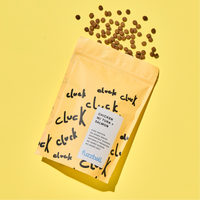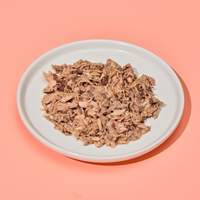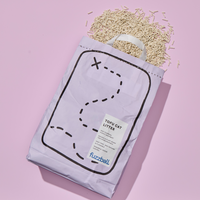Free Feeding vs. Scheduled Feeding Your Cat: Which Is Better?
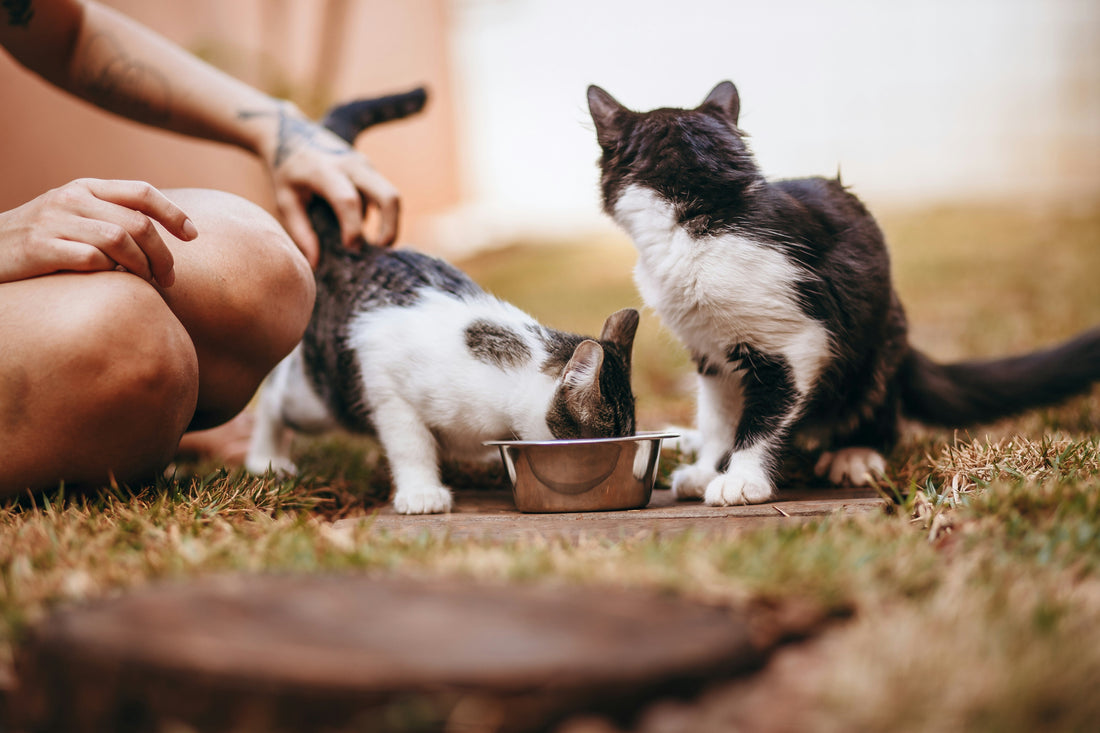
Feeding your cat might seem simple, but how and when you do it can actually make a big difference to their health and behaviour. Some cat parents prefer to leave food out all day so their furry friend can graze when they feel like it, while others stick to set mealtimes with portioned bowls. Both approaches have their pros and cons, and choosing the right one often depends on your cat’s lifestyle, age, and even personality. Whether you’ve got a laid-back grazer or a dry food-obsessed fluffball, understanding the impact of feeding habits can help keep your cat happy, healthy, and well-fed.
What Is Free Feeding?
Free feeding your cat means that you fill their bowl and leave it out for them. This allows your cat to eat as much as they want when they want. Free feeding works best with dry cat food since it doesn’t spoil as quickly as wet cat food does. There are both advantages and disadvantages to free-feeding your cat:
What Are the Advantages Of Free Feeding Your Cat?
The first and most obvious advantage of free feeding your cat is that you don’t have to worry about making it home for mealtime which can be a challenge for owners with busy schedules. It also allows cats to eat smaller meals throughout the day at their own pace. Free feeding can also be beneficial for multi-cat households, as it reduces competition for food and allows cats to eat when they are hungry, even if other cats are around. However, it's crucial to monitor food intake and portion sizes to prevent overeating and potential weight gain.
What Are the Disadvantages Of Free Feeding Your Cat?
Even though there are some major benefits to free feeding, there are also a few disadvantages. Although it may appear easy, free-feeding cats can have a number of negative effects including obesity and overeating. Free feeding can also make it challenging to keep an eye on your cat's food intake and track any potential changes in appetite. In multi-cat households, it can also occasionally result in competitive behaviour and hinder the use of food as a technique for positive reinforcement.
When Free Feeding Cats Might Work Best
For some cats, such as elderly cats, cats with health issues, or kittens, free feeding, in which cats have continuous access to dry food may be desirable, however, it is not appropriate for all cats. Cats can eat several smaller meals throughout the day with free feeding, which might be convenient, but if it is not carefully handled, it can lead to overeating and obesity.
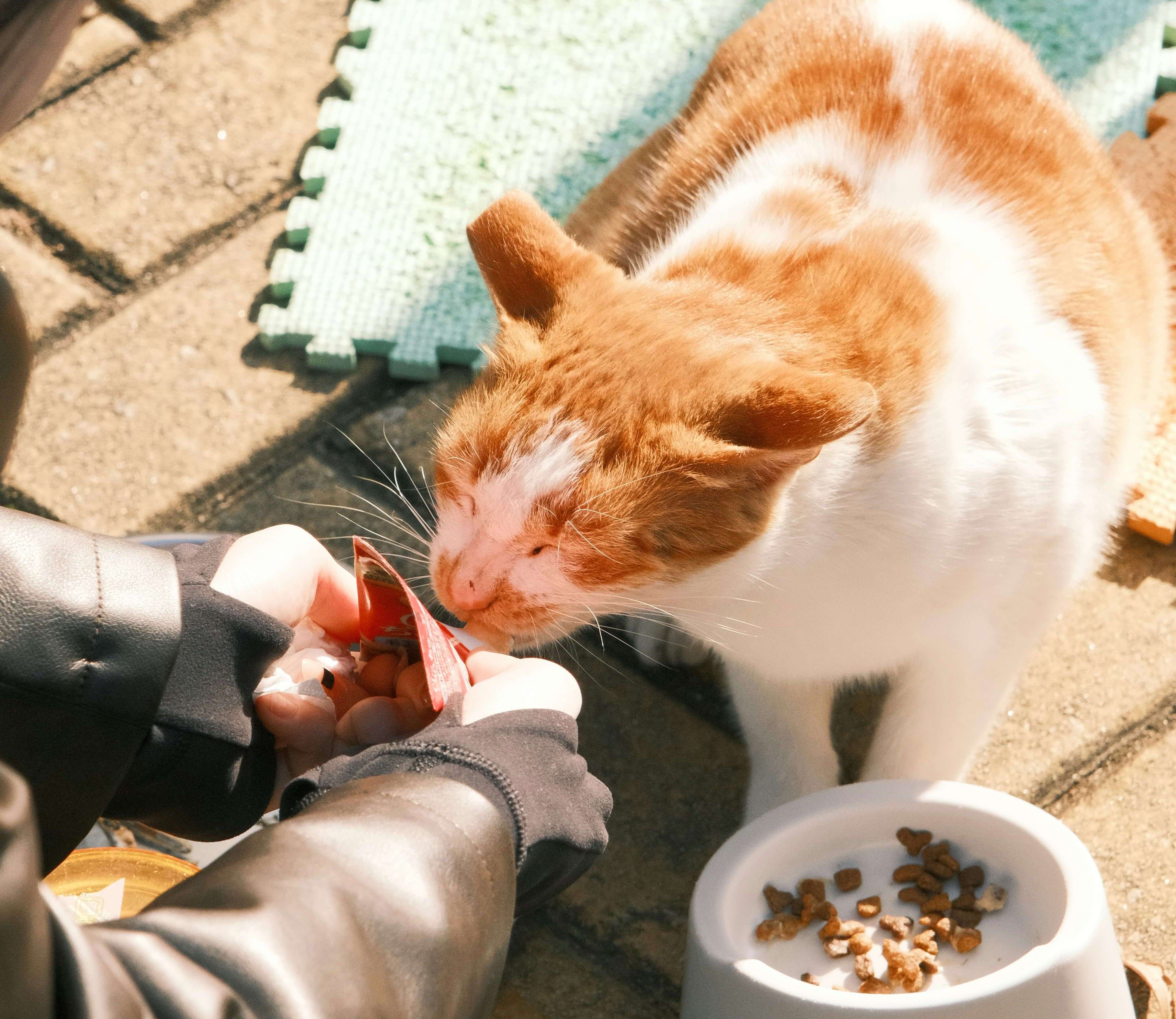
What Is Scheduled Feeding?
Scheduled feeding is when you feed your cat their food at the same time every day. Owners can do this if they have a predictable enough schedule that will ensure your home at mealtime. Scheduled feeding is the healthiest option for your cat since you can monitor the amount of food your cat eats. There are different ways you can do scheduled feeding; you can fill the bowl with food and let your cat eat, then take it away once they have eaten enough, or, you can measure out the amount of food they need to eat at each mealtime and leave it for your cat to eat at their own pace.
What Are the Advantages Of Scheduled Feeding For Cats?
There are a number of benefits to feeding cats on a schedule. These include simpler weight control, better tracking of changes in appetite, and less begging. Additionally, it makes portion management easier and can assist multi-cat homes deal with issues connected to food.
What Are the Disadvantages Of Scheduled Feeding For Cats?
The drawbacks of scheduled cat feeding include the need for the owner to be present during mealtimes, the tendency for cats to wolf down food in anticipation, and the possibility of food guarding in multi-cat households. Furthermore, especially in homes with multiple cats, it could be more difficult to monitor changes in eating patterns or make sure all cats are getting enough food.
When Is Scheduled Feeding Cats Ideal?
Scheduled feeding is especially beneficial in situations where structure, health monitoring, and portion control are essential.
What Are the Differences Between Free Feeding and Scheduled Feeding?
The following chart provides a detailed comparison of the main distinctions between planned and free feeding for cats, taking into account factors like cost, convenience, behavioural impacts, and health impacts:
|
Aspect |
Free Feeding |
Scheduled Feeding |
|---|---|---|
|
Feeding Style |
Food is available all day for the cat to eat at will |
Food is given at set times in measured portions |
|
Control Over Portions |
Minimal control — cat eats as much as they want |
High control — owner decides portion sizes |
|
Weight Management |
Higher risk of overeating and obesity |
Easier to manage weight and prevent obesity |
|
Meal Monitoring |
Difficult to track how much a cat is eating |
Easy to monitor appetite and detect changes in eating behaviour |
|
Food Freshness |
Dry food may go stale over time |
Food is fresh at each mealtime |
|
Best Suited For |
Low-energy cats, grazers, or multi-cat homes with no food aggression |
Active cats, cats with health conditions, or households monitoring diet |
|
Health Benefits |
Convenient but may increase the risk of health issues like diabetes |
Supports healthy metabolism and digestive routine |
|
Behavioural Impact |
This may lead to food obsession or boredom |
Encourages routine and reduces food anxiety |
|
Convenience for Owners |
Low effort; ideal for busy schedules |
Requires more planning and consistency |
|
Type of Food Used |
Usually limited to dry food to avoid spoilage |
Allows use of wet, raw, or dry food |
|
Bonding Time |
Less direct interaction during feeding |
More bonding and engagement with the cat during meals |
|
Cost Effectiveness |
This may lead to more food waste and higher costs |
More economical due to controlled portions |
|
Suitability for Multi-Cat Homes |
Can cause food guarding |
Allows individual feeding but may require separate feeding stations |

Is Free Feeding Cats Better Than Scheduled Feeding?
Even though free feeding may appear more convenient, scheduled feeding is generally seen to be healthier for a cat's general health and well-being. Free feeding, in which food is constantly available, can result in obesity and overeating, particularly in cats who struggle to control their consumption. Scheduled feeding makes it possible to better regulate portion sizes, keeps an eye on food intake, and even promotes good behaviour.
Common Mistakes To Avoid When Free Feeding Your Cats
It might seem convenient to leave a bowl of dry food out all day, but free feeding can lead to some sneaky health issues. One of the biggest problems is overfeeding, which often leads to weight gain and obesity, especially in less active indoor cats. It also makes it hard to track how much your cat is really eating, which matters if they have specific dietary needs or health conditions.
Another mistake? Assuming all dry food is suitable for free feeding. Some kibble doesn’t provide balanced nutrition in every bite, which could lead to nutrient deficiencies or digestive issues over time. Every cat is different, so their feeding approach should be too. It's always best to monitor their weight, feed measured portions, and check in with your vet if you're unsure what works best for your feline friend.

How Can I Transition My Cats to Scheduled Feeding?
Switching from free feeding to scheduled feeding requires patience and a gradual approach to avoid stressing your cat. Here’s how you can slowly transition your cat to a scheduled feeding:
- Choose fixed meal times: Decide on two to three meal times per day, spaced evenly.
- Determine the daily food amount: Based on your cat's weight and activity level, determine how much food they require each day. Then, divide that amount into the number of meals you wish to offer them.
- Gradual reduction: To increase the amount of time the free-feeding dish is unavailable, start by removing it for brief periods of time.
- Be consistent: Even if the cat hasn't finished eating, follow your new schedule and take away any leftover food after a predetermined amount of time.
- Introduce meal portions: As you gradually reduce the quantity left out for free feeding, serve little meals at the designated times.
- Provide distractions: Use toys or playtime to keep your cat occupied between meals.
- Monitor progress: Pay attention to your cat's behaviour and modify the timing or portion sizes as necessary.
Remember that patience is key during this transition. Your cat will be more comfortable and experience less stress if you gradually get used to a regular feeding schedule.
At the end of the day, there’s no one-size-fits-all answer when it comes to feeding your cat. Some cats thrive on the freedom of grazing, while others do better with a structured routine. It really depends on your cat’s age, personality, lifestyle, and any health concerns. Whether you stick with free feeding, switch to scheduled meals, or find a mix that works for both of you, the goal is always the same: keeping your cat happy, healthy, and well-fed.

